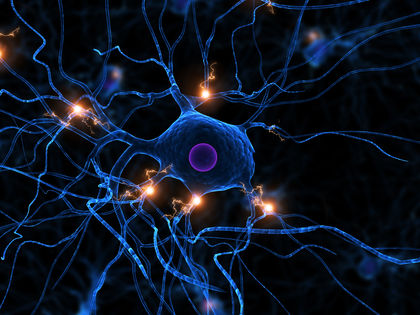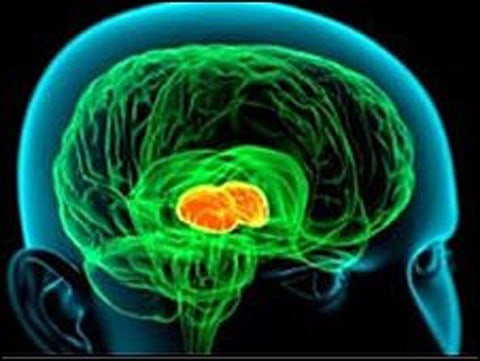|
In the PSYCHIATRY area the specialized consultations are offered by Dr. POP ALEXANDRA, Dr. CAULEA AURORA si Dr. DOBROGEANU MARIA
PSYCHIATRY NOTIONS
The semeiology of knowledge processes
Sensation
· elementary psychic act, mono-modal
· realizes the singular image of a characteristic of objects and phenomena in the surrounding environment.
· it's due to the action of objects and phenomena over the sensing organs.
· accentuates the elementary properties of the matter (form, measure, heaviness, color, smell, taste)
· represents the initial fountain of all information
·are subjective images of the objective world
·the reflected image becomes a subject's conscience element- of ideal order
Sensation's particularities
· instruments of reflection for the material world through a system of analysers, over which it takes direct actions
·represents reflection, in an ideal plan, over separate properties of concrete objects and phenomena
Perceptions
· are elementary sensory processes
· are distinguished by synthetism, unity, integrity
· they give the objective reality in ensemble pictures
· multimodal: simultaneous conditions, progression, multiple characteristics of the external world objects
Perception implies relations between:
· object's qualities and
· subjective conditions (internal) of the individual (needs, interests, experience)
· perception includes the general and essential characteristics of thinghs
· perception appears after the age of 3 months
· hearing perception appears after the first year of life.
Thinking disorders
Thinking is the generalized and intermediate reflection of objective objects and phenomena and of the internal relations between them. As a knowledge process, thinking has no sensory character, taking place in the generalization and abstractization process. Thinking operates through notions that express symbolically: facts, phenomena, relations, actions. These symbols are words. So, between thinking and language there is an indestructible relation. If the language and notions of an individual are more evolved, he will develop a more successful thinking act.
We are speaking of formal or dynamic thinking disorders, when the rhythm of the thinking process is modifies. So we quote: the acceleration of the thinking process, its slowing down, its cancelation or its blockage.

Speaking disorders
In psychic disorders we can observe significant modifications in the way the patients speak.
Loquacity appoints a rapid and incoherent flux of words.
Shouting, vociferations are signs of agitation (mania, confusion, schizophrenia, dementia). Mutism of some patients leads to suspending verbal communication. These can have many aspects: inhibition mutism, like in melancholy stupor, schizophrenia catatonic mutism, hysterical aphonia or remonstrative mutism of the persecuted or vindicative delirious patients.
Language is the expressions of thinking, speaking will reflect the content of your thoughts through style and syntax modifications. We must observe semantics modifications, characterized through alteration of the sense of words. We see in schizophrenia patients: neologisms, hermetic metaphor. In other times it arrives to verbal incoherence, that can lead to an indecipherable language .
Writing disorders are frequently met in schizophrenia or chronic delirious, expresses by graphism, mannerism and stereotypy alterations.
Delirious ideas form an important category in thinking disorders. Through delirious ideas we understand any mistaken reflection of the reality, that dominate the patient's consciousness. They are impenetrable, the patient does not have a critic attitude and does not see their pathologic character.
The content of delirious ideas can be extremely divers: from ideas that can be plausible, until ideas with an implausible content, absurd, fantastic. Depending on their persistency, delirious ideas can be mobile, oscillating, heteromorphic, changing in short period of time (days, even hours), or can be stable, inert, with a tendency for fixation and systematizing. Through systematized delirium, we understand grouping delirious ideas around a delirious theme, sometimes with a logic appearance. There are many classifications for delirium. More simple, if we refer to the affective font that comes with delirium, we can classify it in:
-delirium with a depression character;
-delirium with an expansive character.
In delirium with depression character, the idea's theme has an affective form, sad, painful, like in guilt, self blame, self accusation, material and physic ruin delirious ideas. Delirium could culminate in negation ideas (the patient affirms that he does not have organs).
Expansive delirium appears on an euphoric font, happiness, invention.
Catatonia in keeping an uncomfortable position (in one leg, with a hand up), like in catatonic schizophrenia or repeating some words and gestures.
Catalepsy or waxy flexibility is the possibility to keep an imposed body attitude, of the limbs. We see it in catatonic schizophrenia.

Negativism is the refuse to attend to imposed demands. Motor negativism, alimentary, verbal or sphincter negativism are met in schizophrenia.
SCHIZOPHRENIA
From WHO statistics, it is appreciated that 70% of the debut forms are of insidious model , and only 30% are an acute form of the disease. Anyway, to recognize the disease early is very important for an early treatment and for a favorable evolution.
In schizophrenia acute debut , a brutal rupture, from the anterior behavior habitus of the patient, is produced. A sudden and unpredictable transformation in the patient's character and conduct in obviously remarked. This sudden behavior change can be related to stressful events in the patient's life: school failure, material loss, mourning, sometimes serious diseases.
Debut psychotic conditions can be :
- acute delirious-hallucinatory seizures. In many cases there are two, three delirious repeated flashes. The delirium is poor, the anxiety felling lacks. Gradual, autism, oddness, impenetrability appear.
- maniac excitation conditions. We see atypical symptoms: introversion, discrepancy, odd notes.
- depression condition with acute debut. We see the presence of autism, oddness, thinking incoherence.

Delirious ideas with different themes, associated with hearing hallucinations, can be a debut mode of the disease.
In schizophrenia debut we can often meet vague delirious ideas, threatening feelings, persecution ideas, body transformation ideas. Depersonalization and failure ideas can be associated with delirious ideas. Thinking disorders appear, alimentary instinct disorders, sexual instinct disorders also appear.
Depersonalization experiments are feelings of great anxiety. The patient feels like he has been transformed into another, or asks himself if another took a place in his person.
Obsessive ideas that could appear in schizophrenia debut have abstract themes, sometimes containing an impenetrable symbolism.
Neurotic symptoms can constitute a schizophrenia debut clinical picture. Some preoccupation about the functioning of some organs and body integrity appears.
In progressive debut an odd behavior could appear, senseless, inadaptation, vagabondage tendency, pathologic aberration, unmotivated running.
The change that the disease produces manifests in school and work activity areas too. School results become unsatisfactory, and work efficiency decreases.
There is an obvious apathy, indifference for personal hygiene, clothing and posture, all of these becoming messy.
Nutrition instinct is modified toward anorexia or pathologic nutrition behavior. Sometimes, excessive alcohol and drug abuse appears .
There are also forms of pseudoneurotic debut of hypochondriac type. The patient has changing hypochondriac plaints, vaguely defined. Hypochondriac plaints could come along with odd impressions that the patients describe as void sensation, interior blankness, in the abdomen or thorax.
Insidious debut of schizophrenia often has a pseudo-psychotic pattern. The patient makes repeated, inexplicable antisocial acts, without any purpose. The patent's behavior is generally changed, even outside the antisocial or delinquency acts. Impulsivity, instability, inadaptability, all of these characterize the behavior.
Premorbid signs of schizophrenia must be very well known. Typical picture, but not mandatory, is that of schizoid premorbid personality or schizotypal. These personalities are characterized through indifference, they are introverted, and do not communicate. That person has few friends, avoids the opposite sex, does not participate in social activities (parties, dance, team sports). They prefer to watch TV, play computer games for hours or listen to music all alone.
The prodrome has a duration of aprox. one year, in general (there are rare forms of sudden debut schizophrenia), when the close people see modifications in the behavior and social relations, but unfortunately, in this stage of the disease, the medical consult is postponed and even avoided. Late debut and the best evolution related to women represents the most important acknowledgement, and the cause of this sex difference is still a mystery. The disorder's debut is observed by the family and friends, that characterize the patient as being changed, "is not the same person". The individual does not have the same capacity in daily activities, appears as indifferent and with a self abandon attitude. In exchange, he can become interested in abstract ideas, philosophic, religious and occult ideas.
Gradually, the affected individuals lose the contact with the reality and develop the next phenomena:
» Perplexity – in the affection's debut, the patients say that daily experiences seem strange, they don't realize what is the reason of these changes in their behavior and pesonality, where do all these symptoms come from.
» Isolation – the patient retreats in loneliness, has the feeling that he is different and avoids the company of others, that were close to him in the past .
» Anxiety and terror – a general discomfort feeling and anxiety invades the daily experiences. This anxiety can reach paroxysm when the patient perceives reality as being threatening and ascribes this danger to some external sources. Other signs and symptoms of the prodrom period are: strange behavior (oddness), affectivity changes, language disorders), odd ideas, strange perceptual experiences .
In the condition period of schizophrenia, the signs and symptoms refer to exterior aspect, perception, attention, memory, thinking, affectivity, will and other areas of the patient's personality, that are deeply altered. We will expose the most frequent aspects related to this topic.
Clinical symptomatology of schizophrenia reflects in all the psychic functions, in a form that is more or less expressed.
Perception disorders in all analyzers:
-visual illusions (look alike, false recognition);
-hearing hallucinations ("voices" that comment the patient's actions, that encourage or admonish him, sometimes with an imperative character, advising him to acts of aggression or self aggression);
-hearing pseusohallucinations (his mind is speaking, he hears with the ears of his mind, hs own thoughts are sonorous- ideo-verbal automatism);
-body hallucinations and pseusohallucinations (forced sexual relations, the marrow despoliation sensation, the existence of some parasites in different locations);
-visual hallucinations, more frequent in children and teenagers;
-taste and smell hallucinations, associating delirious ideas of poisoning, persecution, chasing
Attention disorders generating lack of interest towards ambiance, detachment;
-non-specific memory disorders, determining fixation hypomnesia, as an effect of the lack of interest towards reality;
Thinking disorders: incoherence, odd associations, acceleration or slowing down of the thinking activity, delirium.
-frequent themes of schizophrenia delirium are: chasing, influence, poisoning, hypochondria, guilt and self blame, jealousy.
-all delirious phenomena contribute to autism realization, the patient creates a world just for him, detached from the real one;
Written and spoken language disorders:
-graphic negativism, graphic stereotypes, mirror writing (from the right to the left)
-exaggerated verbal flow, stereotypes (continuously repeating words, phrases), mutism, talking to third person about himself, infantile speaking, tonality modifications, metaphoric language, creating new words;
Affectivity disorders: affective lability, affective indifference, affective inversions, affective rigidity.
Psycho-motricity disorders: catatonic syndrome, characterized through inertia and lack of motor initiative, catalepsy (maintaining imposed attitudes, waxy flexibility, stereotypes, mannerism, paradoxical mimic, negativism and suggestibility);
Personality disorders:
-losing affiliation to "me", the self acts and feeling being perceived as made, influenced and lead by others;
-losing the unity of your own person; deleting the borders between "me" and "non-me", patients identifying with exterior objects, transposing their feelings in those around them;
Rank I symptoms:
-thinking enunciation and and echo
-hearing hallucination where the voices talk to one other
-hearing hallucinations where the voices comment on the patient's behavior
-imposed body sensations
-theft of thoughts
-imposed thinking
-thinking disclosure
-delirious perception
-imposed or controlled feelings,
-imposed or controlled impulses,
-imposed or controlled will.
Rank II symptoms:
-other perception disorders
-delirious intuition
-perplexity
-disposition variation: euphoria or depression,

- affective depletion.
|